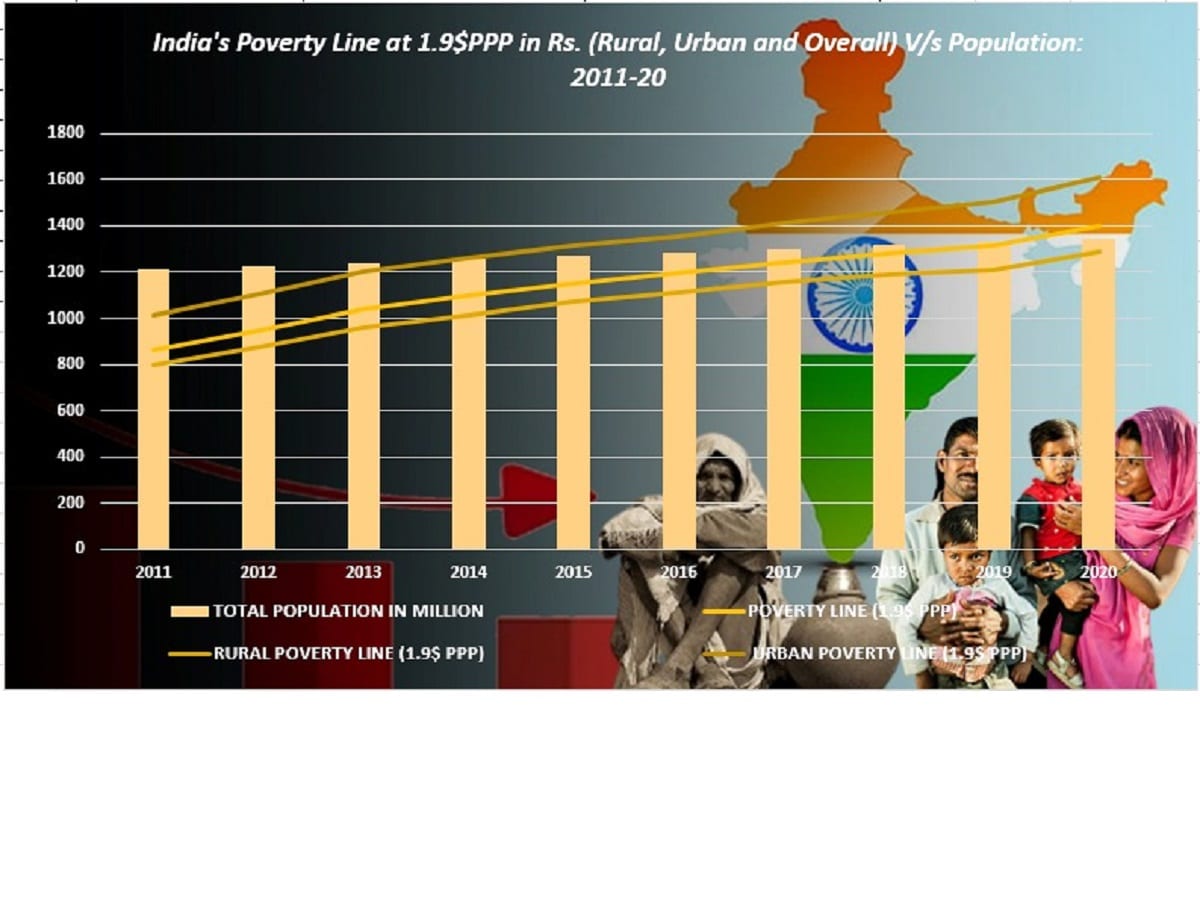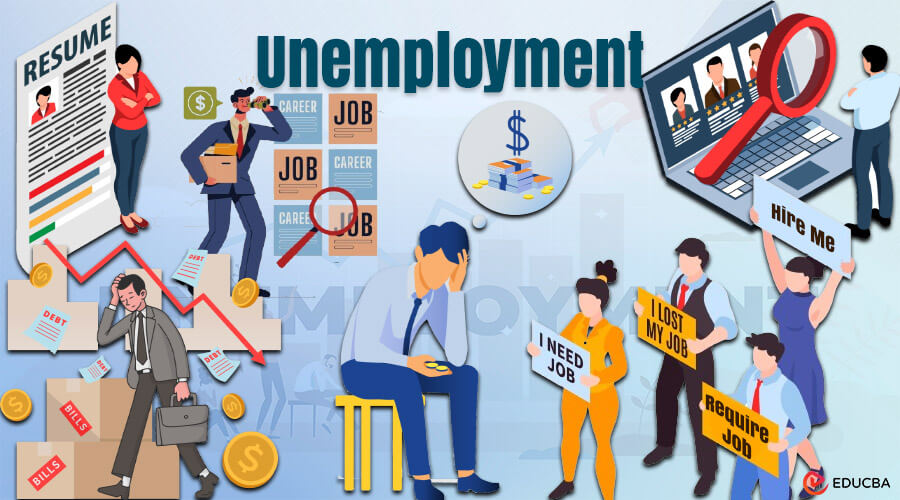SOCIETY PROBLEMS
MANISHA YADAV
1 . POVERTY
Understanding Poverty
Poverty is a multifaceted issue characterized by the lack of financial resources and access to basic necessities such as food, shelter, healthcare, and education. It affects millions globally, perpetuating cycles of hardship and limiting opportunities for individuals and communities to improve their lives. Understanding the causes of poverty and exploring potential solutions is crucial for creating a more equitable and prosperous society.
Causes of Poverty
Economic Factors: One of the primary causes of poverty is economic instability. Lack of job opportunities, underemployment, and low wages prevent individuals from earning sufficient income to meet their needs. Economic recessions and downturns exacerbate this issue, leading to higher unemployment rates and decreased economic growth.
Education: Access to quality education is a significant determinant of poverty. Individuals with limited education often have fewer employment opportunities and earn lower wages. In many regions, education systems are underfunded and inaccessible, perpetuating a cycle of poverty as children from impoverished families are unable to receive the education needed to improve their circumstances.
Healthcare: Poor health and lack of access to healthcare services contribute significantly to poverty. Illness and injury can prevent individuals from working, leading to loss of income and increased medical expenses. In many developing countries, healthcare systems are inadequate, and people lack access to essential services and medications.
Social Inequality: Discrimination and social inequality based on race, gender, ethnicity, and other factors also play a crucial role in perpetuating poverty. Marginalized groups often face systemic barriers that limit their access to education, employment, and social services, leading to persistent economic disadvantage.
Political Instability and Conflict: Regions experiencing political instability, corruption, and conflict are more likely to have high poverty rates. War and violence disrupt economies, displace populations, and destroy infrastructure, making it difficult for individuals to sustain their livelihoods.
Environmental Factors: Environmental degradation and climate change disproportionately affect impoverished communities. Natural disasters, such as floods, droughts, and hurricanes, can devastate agricultural economies and displace populations, pushing them further into poverty.
Solutions to Poverty
Economic Development and Job Creation: Stimulating economic growth and creating job opportunities are essential for reducing poverty. Governments and organizations can invest in infrastructure projects, support small and medium-sized enterprises, and promote industries that provide sustainable employment. Implementing fair labour practices and ensuring a living wage can also help individuals earn enough to support themselves and their families.
Education Access and Quality: Improving access to quality education is crucial for breaking the cycle of poverty. Governments should invest in education infrastructure, provide scholarships and financial aid for disadvantaged students, and ensure that curricula are relevant to the job market. Vocational training and adult education programs can also help individuals gain skills needed for better-paying jobs.
Healthcare Accessibility: Strengthening healthcare systems and making healthcare services accessible to all can significantly reduce poverty. This includes investing in healthcare infrastructure, ensuring the availability of essential medicines, and implementing public health programs. Preventative care and health education can also reduce the incidence of illness and improve overall well-being.
Social Safety Nets: Social safety nets, such as unemployment benefits, food assistance programs, and housing subsidies, can provide immediate relief to those in poverty. These programs help individuals meet their basic needs while they work towards improving their economic situation. Ensuring that these safety nets are well-funded and accessible is critical.
Addressing Social Inequality: Tackling discrimination and promoting social inclusion are essential for reducing poverty. This can be achieved through anti-discrimination laws, affirmative action policies, and public awareness campaigns. Empowering marginalized groups by ensuring equal access to education, employment, and political representation is crucial for creating a more equitable society.
Environmental Sustainability: Addressing environmental issues and promoting sustainable development can help reduce poverty. Governments and organizations should work towards mitigating climate change, protecting natural resources, and supporting communities affected by environmental degradation. Sustainable agricultural practices and renewable energy initiatives can provide economic opportunities while preserving the environment.
Conclusion
Poverty is a complex issue with multiple causes and requires a multifaceted approach to address. By understanding the underlying factors and implementing comprehensive solutions, we can work towards a future where everyone has the opportunity to live a dignified and prosperous life. Economic development, education, healthcare, social safety nets, social equality, and environmental sustainability are all critical components in the fight against poverty. Through coordinated efforts at local, national, and global levels, we can make significant strides in reducing poverty and improving the quality of life for millions around the world.
2. UNEMPLOYMENT
Unemployment is a pervasive societal issue that significantly impacts economic stability, individual well-being, and social cohesion. It occurs when individuals who are capable and willing to work cannot find employment. The causes of unemployment are diverse, and its effects extend beyond financial hardship to influence various aspects of society.
Causes of Unemployment
Economic Factors: One of the primary causes of unemployment is economic downturns. During recessions, businesses often reduce their workforce to cut costs, leading to higher unemployment rates. Additionally, structural changes in the economy, such as the decline of certain industries and the rise of automation and artificial intelligence, can render specific skills obsolete, increasing joblessness among workers whose skills are no longer in demand.
Technological Advances: While technological progress drives economic growth, it can also lead to job displacement. Automation and artificial intelligence replace manual and routine jobs, reducing the need for human labor in sectors such as manufacturing, retail, and customer service. This technological unemployment affects workers who may not have the skills to transition into new roles created by technological advancements.
Educational Mismatch: There is often a mismatch between the skills possessed by job seekers and the requirements of available jobs. This skills gap is exacerbated by rapid changes in technology and industry demands, leaving many workers unemployed or underemployed. Educational systems may lag in adapting curricula to meet these evolving needs, contributing to persistent unemployment.
Globalization: Globalization has led to the relocation of jobs to countries with lower labor costs, resulting in job losses in higher-cost economies. While globalization can create new opportunities, it also leads to significant disruptions in local job markets, particularly in manufacturing and other labor-intensive industries.
Demographic Changes: Population growth and demographic shifts, such as an aging workforce or an influx of young workers, can also impact unemployment rates. In some regions, there may be more people entering the labor market than there are jobs available, leading to higher unemployment, particularly among young people.
Effects of Unemployment
Economic Impact: Unemployment has a direct negative effect on economic growth. When people are unemployed, they have less disposable income, leading to reduced consumer spending and lower demand for goods and services. This can create a vicious cycle of reduced production, further job losses, and economic stagnation.
Individual Well-being: Unemployment adversely affects individuals' mental and physical health. The stress and uncertainty associated with job loss can lead to depression, anxiety, and other mental health issues. Long-term unemployment can also result in a deterioration of skills and employability, making it more difficult for individuals to re-enter the workforce.
Social Consequences: High unemployment rates can lead to increased social tensions and instability. Unemployed individuals may feel marginalized and disconnected from society, leading to higher crime rates, substance abuse, and social unrest. Communities with high unemployment often suffer from reduced social cohesion and increased poverty levels.
Governmental Strain: Unemployment places a significant strain on government resources. Increased demand for unemployment benefits, social services, and welfare programs can lead to higher public expenditure and budget deficits. Additionally, lower tax revenues from unemployed individuals and reduced business activity can constrain government budgets, limiting the ability to invest in public goods and services.
Solutions to Unemployment
Economic Stimulus: Governments can implement policies to stimulate economic growth and job creation. This includes investing in infrastructure projects, providing tax incentives for businesses to hire workers, and supporting small and medium-sized enterprises. Stimulating demand through fiscal policies can help reduce unemployment.
Education and Training: Addressing the skills gap is crucial for reducing unemployment. Governments and educational institutions should focus on aligning curricula with the needs of the labor market. Vocational training, apprenticeships, and continuous education programs can help workers acquire the skills needed for emerging industries and technologies.
Technological Adaptation: Embracing technological change while mitigating its adverse effects is essential. This includes supporting research and development in new technologies that create jobs, promoting industries that are less susceptible to automation, and implementing policies to protect workers displaced by technological advancements.
Social Policies: Strengthening social safety nets can help mitigate the negative effects of unemployment. This includes providing adequate unemployment benefits, healthcare, and retraining programs. Social policies should also focus on reducing income inequality and supporting disadvantaged groups to ensure a more inclusive labor market.
Global Cooperation: Addressing the challenges of globalization requires international cooperation. Trade policies should balance the benefits of open markets with the protection of domestic jobs. International agreements can help manage the flow of jobs and ensure fair labor practices globally.
Conclusion
Unemployment is a complex issue with far-reaching effects on individuals, economies, and societies. Tackling it requires a comprehensive approach that addresses its root causes and mitigates its impacts. Through economic policies, education and training, technological adaptation, robust social policies, and global cooperation, societies can work towards reducing unemployment and fostering a more stable and inclusive labor market.
3. CORRUPTION
Corruption is a pervasive issue that undermines the integrity of societies and institutions worldwide. It involves the misuse of power by government officials, corporate leaders, or other authority figures for personal gain, often at the expense of the public good. Corruption manifests in various forms, from bribery and embezzlement to nepotism and fraud, and its consequences are far-reaching, affecting economic development, social justice, and public trust.
Causes of Corruption
Weak Governance and Institutions: One of the primary causes of corruption is weak governance. When institutions lack transparency, accountability, and oversight, opportunities for corrupt practices increase. Ineffective legal systems, weak law enforcement, and inadequate checks and balances allow corrupt activities to go unpunished.
Economic Inequality: High levels of economic inequality can foster corruption. In societies where wealth and resources are unevenly distributed, those in power may exploit their positions to maintain their status and accumulate more wealth. This creates a cycle where the rich become richer at the expense of the poor, exacerbating social inequality.
Political Factors: Political corruption is rampant in many countries, where political leaders and parties engage in corrupt practices to secure and maintain power. This includes vote-buying, manipulation of electoral processes, and misallocation of public funds for political gain. Such practices erode democratic institutions and weaken public trust in governance.
Cultural Norms: In some societies, corruption is deeply ingrained in cultural norms and practices. When corruption is seen as a necessary means to navigate bureaucracy or achieve success, it becomes normalized and harder to eradicate. Social acceptance of corruption perpetuates its prevalence across generations.
Lack of Education and Awareness: Low levels of education and public awareness contribute to corruption. When citizens are unaware of their rights or the mechanisms for accountability, they are less likely to challenge corrupt practices. Education plays a crucial role in empowering individuals to recognize and resist corruption.
Effects of Corruption
Economic Impact: Corruption has a detrimental effect on economic growth and development. It discourages investment, increases the cost of doing business, and distorts markets. Public resources are often diverted away from essential services like healthcare, education, and infrastructure, leading to inefficiencies and reduced quality of life.
Social Inequality: Corruption exacerbates social inequality by disproportionately affecting the most vulnerable populations. Resources meant for public welfare are siphoned off by corrupt officials, leading to inadequate public services and infrastructure. This widens the gap between the rich and the poor, perpetuating cycles of poverty and social exclusion.
Erosion of Trust: Corruption undermines public trust in government and institutions. When citizens perceive that their leaders are corrupt, they lose faith in the rule of law and democratic processes. This erosion of trust can lead to political instability, social unrest, and a decline in civic engagement.
Undermining Justice: Corruption in the judicial system is particularly harmful, as it compromises the rule of law and the principle of justice. When judges and law enforcement officials are corrupt, the legal system fails to protect citizens' rights and uphold justice, leading to impunity and widespread injustice.
Environmental Degradation: Corruption also contributes to environmental degradation. When regulatory agencies are corrupt, environmental laws and regulations are not enforced, allowing illegal activities like deforestation, mining, and pollution to continue unchecked. This has long-term detrimental effects on ecosystems and public health.
Solutions to Corruption
Strengthening Institutions: Building strong, transparent, and accountable institutions is essential for combating corruption. This includes establishing robust legal frameworks, independent anti-corruption agencies, and effective oversight mechanisms. Strengthening the rule of law ensures that corrupt activities are detected and punished.
Promoting Transparency and Accountability: Transparency in government and business operations is crucial. Governments should implement open data initiatives, ensure public access to information, and foster a culture of accountability. Whistleblower protection laws can encourage individuals to report corrupt activities without fear of retaliation.
Economic Reforms: Addressing economic inequality through inclusive policies can reduce the incentive for corruption. Economic reforms that promote fair distribution of resources, create job opportunities, and ensure equitable access to public services can help mitigate the root causes of corruption.
Political Integrity: Ensuring political integrity involves implementing electoral reforms, regulating political financing, and promoting ethical behavior among political leaders. Independent electoral commissions and monitoring organizations can help ensure free and fair elections, reducing political corruption.
Education and Public Awareness: Education is a powerful tool in the fight against corruption. Integrating anti-corruption education into school curricula and public awareness campaigns can help foster a culture of integrity and accountability. Empowering citizens with knowledge about their rights and the mechanisms to challenge corruption is vital.
International Cooperation: Corruption is a global issue that requires international cooperation. Countries should collaborate on cross-border anti-corruption efforts, share best practices, and support global initiatives like the United Nations Convention against Corruption (UNCAC). International organizations and donor agencies can play a key role in promoting transparency and accountability worldwide.
Conclusion
Corruption is a complex and multifaceted problem that affects all aspects of society. Addressing it requires a comprehensive approach that tackles its root causes and promotes a culture of transparency, accountability, and integrity. By strengthening institutions, promoting economic and political reforms, enhancing education and public awareness, and fostering international cooperation, societies can make significant strides in combating corruption and building a more just and equitable world.
4. SUBSTANCE ABUSE
Substance abuse is a significant societal problem that affects individuals, families, and communities. It involves the harmful or hazardous use of psychoactive substances, including alcohol, illicit drugs, and prescription medications. Substance abuse leads to various physical, psychological, and social consequences, making it a multifaceted issue that requires a comprehensive approach to address.
Causes of Substance Abuse
Psychological Factors: Mental health disorders, such as depression, anxiety, and trauma, are closely linked to substance abuse. Individuals may use drugs or alcohol as a coping mechanism to deal with emotional pain or stress. The self-medication hypothesis suggests that people turn to substances to alleviate psychological distress, which can lead to dependency and abuse.
Genetic Predisposition: Research indicates that genetics play a role in an individual's susceptibility to substance abuse. A family history of addiction can increase the risk, as genetic factors may influence how substances affect the brain and behavior. However, genetics alone do not determine substance abuse; environmental factors also play a crucial role.
Environmental Influences: The environment in which a person lives significantly impacts the likelihood of substance abuse. Factors such as peer pressure, family dynamics, socioeconomic status, and exposure to drugs and alcohol can contribute to the initiation and continuation of substance use. High-stress environments, lack of support systems, and easy access to substances increase the risk.
Social and Cultural Factors: Societal attitudes and cultural norms around substance use can influence behavior. In some cultures, excessive drinking or drug use may be socially acceptable or even encouraged, leading to higher rates of abuse. Additionally, societal stigma and discrimination against individuals struggling with addiction can prevent them from seeking help.
Availability and Accessibility: The availability of substances is a significant factor in substance abuse. Regions with high levels of drug trafficking, poor regulation of prescription medications, or widespread alcohol sales often see higher rates of substance abuse. Easy access increases the likelihood of experimentation and habitual use.
Effects of Substance Abuse
Health Consequences: Substance abuse leads to numerous health problems, including cardiovascular diseases, liver damage, respiratory issues, and infectious diseases like HIV/AIDS and hepatitis. Overdose is a severe risk, particularly with opioids and other potent drugs. Long-term use can cause irreversible damage to organs and increase the risk of chronic illnesses.
Mental Health Impact: Substance abuse exacerbates mental health disorders, creating a vicious cycle. It can lead to or worsen conditions such as depression, anxiety, psychosis, and cognitive impairments. The co-occurrence of substance use and mental health disorders, known as dual diagnosis, complicates treatment and recovery.
Social and Economic Costs: The social impact of substance abuse is profound. It contributes to family breakdown, domestic violence, child neglect, and homelessness. Economically, it imposes significant costs on healthcare systems, law enforcement, and social services. Lost productivity and employment due to addiction further strain economic resources.
Criminal Activity: Substance abuse is often linked to criminal behavior. Individuals may engage in illegal activities to obtain drugs, and drug-related crimes, including trafficking and violence, pose substantial challenges for law enforcement. Incarceration rates are high among those with substance use disorders, leading to overcrowded prisons and overburdened judicial systems.
Solutions to Substance Abuse
Prevention Programs: Effective prevention programs are crucial in reducing substance abuse rates. Education campaigns targeting young people can raise awareness about the dangers of drug and alcohol use. Schools, communities, and workplaces should implement programs that promote healthy lifestyles and provide coping skills to resist peer pressure.
Treatment and Rehabilitation: Access to comprehensive treatment and rehabilitation services is vital for individuals struggling with substance abuse. This includes medically supervised detoxification, counseling, behavioral therapies, and support groups. Integrated treatment that addresses both substance use and co-occurring mental health disorders improves outcomes.
Policy and Regulation: Governments play a key role in regulating substances and implementing policies that reduce abuse. This includes controlling the prescription and distribution of medications, enforcing laws against drug trafficking, and providing funding for treatment programs. Policies should also focus on harm reduction, such as needle exchange programs and supervised injection sites, to reduce health risks associated with substance use.
Support Systems: Building strong support systems is essential for recovery and prevention. Family, friends, and community organizations can provide emotional and practical support to individuals battling addiction. Creating an environment that encourages open dialogue and reduces stigma around substance abuse can help individuals seek and receive the help they need.
Research and Education: Ongoing research is necessary to understand the complex nature of substance abuse and to develop effective interventions. Investing in research can lead to better prevention strategies, treatment modalities, and policy decisions. Additionally, educating healthcare providers about substance abuse and its treatment is crucial for early intervention and comprehensive care.
Conclusion
Substance abuse is a multifaceted issue that affects all levels of society. Addressing it requires a comprehensive approach that includes prevention, treatment, policy reform, and support systems. By understanding the underlying causes and implementing effective solutions, society can mitigate the impact of substance abuse and promote healthier, more resilient communities. Through coordinated efforts across healthcare, education, law enforcement, and community organizations, we can work towards reducing substance abuse and its devastating effects on individuals and society.
5. DISCRIMINATION
Discrimination is a pervasive societal issue that manifests in various forms and impacts individuals and communities globally. It involves the unjust or prejudicial treatment of people based on characteristics such as race, gender, age, religion, sexual orientation, disability, and socio-economic status. Discrimination undermines social cohesion, perpetuates inequality, and violates fundamental human rights, making it a critical issue that requires comprehensive solutions.
Causes of Discrimination
Historical Context: Many forms of discrimination have deep historical roots. Colonialism, slavery, and segregation have left lasting legacies of racial and ethnic discrimination. Historical events and societal structures have created power imbalances that continue to influence contemporary attitudes and behaviors.
Cultural and Social Norms: Societal norms and cultural values can perpetuate discriminatory attitudes. Stereotypes and prejudices are often ingrained from a young age through socialization processes, including family teachings, media representations, and educational systems. These norms can legitimize unequal treatment and maintain discriminatory practices.
Economic Factors: Economic disparities contribute to discrimination, as marginalized groups often have limited access to resources and opportunities. Economic inequality can lead to social stratification, where certain groups are systematically disadvantaged in employment, education, and housing, reinforcing cycles of poverty and exclusion.
Political and Legal Systems: Discrimination is often embedded in political and legal frameworks. Laws and policies that fail to protect minority rights or that actively discriminate against certain groups perpetuate inequality. Political rhetoric and practices can also exacerbate divisions and normalize discriminatory attitudes.
Psychological Factors: Cognitive biases and fear of the 'other' contribute to discriminatory behavior. In-group favoritism and out-group hostility are natural human tendencies that can lead to prejudice and exclusion. These psychological factors are often exploited to justify discriminatory practices.
Effects of Discrimination
Economic Impact: Discrimination limits economic opportunities for marginalized groups, leading to lower income levels, higher unemployment rates, and reduced access to quality education and healthcare. This economic exclusion perpetuates poverty and hinders overall economic growth.
Social Fragmentation: Discrimination erodes social cohesion by creating divisions within communities. It fosters an environment of mistrust and hostility, leading to social tensions and conflicts. Marginalized individuals may feel alienated and disconnected from the broader society.
Mental and Physical Health: Experiencing discrimination has severe consequences for mental and physical health. It can lead to stress, anxiety, depression, and other mental health issues. Chronic exposure to discrimination can also result in physical health problems, including hypertension and heart disease.
Access to Justice: Discrimination within the legal system undermines the principle of equal justice. Marginalized groups may face bias in law enforcement, judicial proceedings, and sentencing, resulting in unequal treatment and a lack of trust in the justice system.
Educational Inequities: Discriminatory practices in education result in unequal access to quality schooling and educational resources. This educational disparity limits future opportunities for marginalized groups, perpetuating cycles of disadvantage and hindering social mobility.
Solutions to Discrimination
Legal and Policy Reforms: Implementing and enforcing anti-discrimination laws is crucial for protecting the rights of marginalized groups. Governments must ensure that their legal frameworks promote equality and penalize discriminatory practices. Policies should also focus on affirmative action and equal opportunity to address historical injustices and level the playing field.
Education and Awareness: Raising awareness about the harmful effects of discrimination and promoting diversity and inclusion are essential steps. Educational programs that teach about the value of diversity and the importance of empathy can help reduce prejudices from an early age. Public awareness campaigns can also challenge stereotypes and promote social change.
Economic Empowerment: Addressing economic disparities through targeted programs can help reduce discrimination. Initiatives such as job training, microfinance, and entrepreneurship support for marginalized groups can enhance economic opportunities and reduce inequality. Ensuring equitable access to education, healthcare, and housing is also critical.
Community Engagement: Building inclusive communities involves active engagement with marginalized groups. Encouraging dialogue and collaboration between diverse community members can foster understanding and mutual respect. Community-led initiatives that address local issues of discrimination can be particularly effective.
Institutional Accountability: Institutions must be held accountable for discriminatory practices. This includes implementing diversity and inclusion policies within organizations, conducting regular audits to assess equity, and establishing mechanisms for reporting and addressing discrimination. Leadership commitment to fostering an inclusive culture is essential.
International Cooperation: Discrimination is a global issue that requires international cooperation. Governments, international organizations, and civil society must work together to promote human rights and combat discrimination. Sharing best practices and supporting global initiatives like the United Nations' efforts to end discrimination can amplify impact.
Conclusion
Discrimination is a complex and multifaceted issue that impacts all aspects of society. It requires a comprehensive approach that addresses its root causes and promotes equality and inclusion. By implementing legal reforms, promoting education and awareness, ensuring economic empowerment, engaging communities, holding institutions accountable, and fostering international cooperation, we can work towards a more just and equitable society. Combating discrimination is not only a moral imperative but also essential for achieving social harmony and sustainable development.





Comments
Post a Comment